GardensandparksinJapan - NatureViews

Removed from Unnamed collection
Hama Rikyu 
Hama Rikyu (浜離宮, Hama Rikyū), is a large, attractive landscape garden in central Tokyo. Located alongside Tokyo Bay, Hama Rikyu features seawater ponds which change level with the tides, and a teahouse on an island where visitors can rest and enjoy the scenery. The traditionally styled garden stands in stark contrast to the skyscrapers of the adjacent Shiodome district.
The garden has served many purposes over the centuries. It was originally built as a feudal lord's Tokyo residence and duck hunting grounds during the Edo Period (1603-1867), but later served as a strolling garden and as an imperial detached palace before eventually being opened to the public in its current form. Vestiges of these old roles are still visible throughout the garden including several reconstructed duck hunting blinds, and the remains of an old moat and reconstructed rock wall.
Hama Rikyu is attractive in any season. Although not as famous for its fall foliage as some of the other gardens around Tokyo, it offers plenty of maple, ginkgo and other trees that show their beautiful autumn colors between late November and early December. https://www.japan-guide.com/e/e3025.html
Map
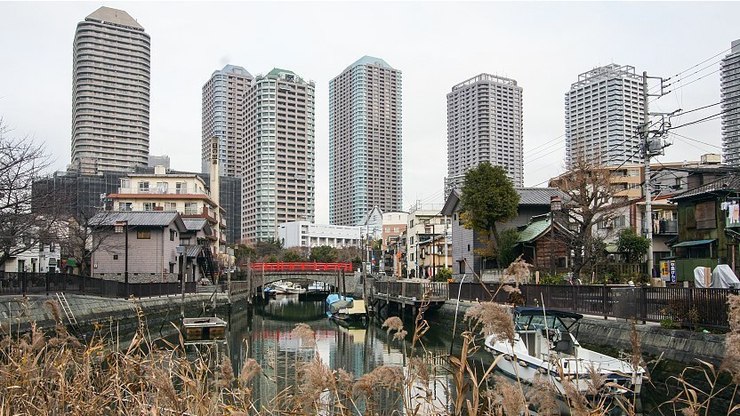
Removed from Unnamed collection
Tsukishima 
Tsukishima (月島, lit. moon island) is a man made island in Tokyo Bay, just across the channel from Tsukiji fish market. It was created over 100 years ago using earth that was dredged from the bay during the construction of a shipping channel.
In the last few decades, areas of the island were redeveloped into residential high-rise complexes; however, you can still find remnants of the atmosphere of old Tokyo if you poke around the back alleys and lanes, especially around Sumiyoshi Shrine. https://www.japan-guide.com/e/e3015.html
Map

Removed from Unnamed collection
Hokkaido University Botanic Gardens 
This botanical garden (北海道大学植物園, Hokkaidō Daigaku Shokubutsuen) close to Sapporo's city center belongs to Hokkaido University and primarily serves a scientific and educational purpose. The garden with its walking trails and lawns, however, is also a pleasant place to take a break or to have a (non-alcoholic) picnic.
Established in 1886, the Botanic Garden preserves a small part of the forest which formerly covered the Ishikari Plain. In addition, there is an alpine garden, a greenhouse and a small Ainu museum. During the winter, only the greenhouse is open to the public. https://www.japan-guide.com/e/e5304.html
Map
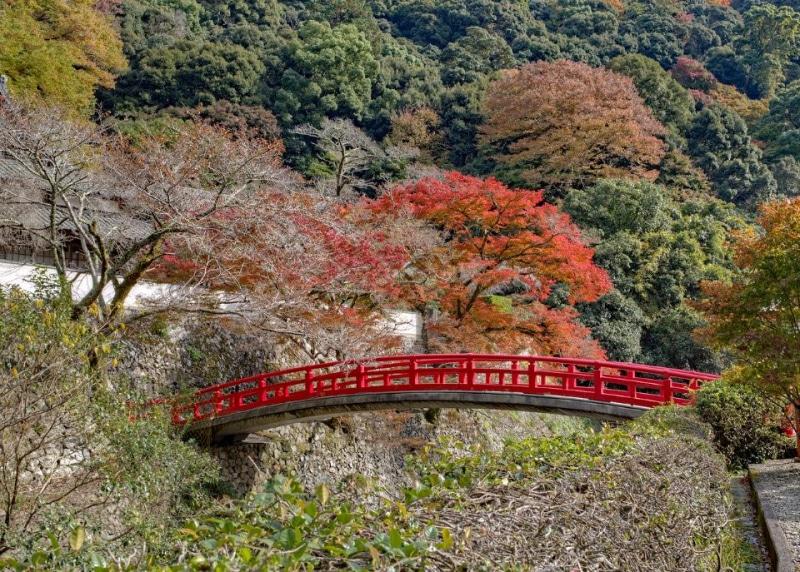
Removed from Unnamed collection
Mino Park 
Minoo Park (箕面公園, Minō Kōen, also spelt Mino or Minoh) is a forested valley on the outskirts of Osaka, just north of the urban sprawl. During the fall, it is one of the best places in the Kansai Region to see the autumn colours in a natural setting, as opposed to the attractive fall foliage found at temples and gardens. The colours are usually best in the second half of November.
Similar to Tokyo's Mount Takao, Minoo Park is the closest spot to the busy metropolis of Osaka to find a spacious natural recreation area. The park can be reached in less than 30 minutes from the downtown Umeda area. Another similarity, Takao and Minoo were both given quasi-national park status in 1967 to commemorate the hundredth anniversary of the Meiji Period (1867-1912). https://www.japan-guide.com/e/e4019.html
Map
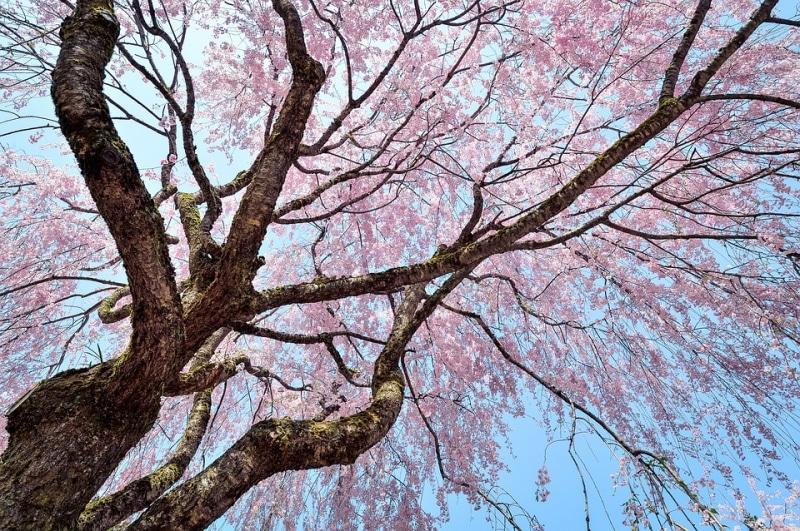
Removed from Unnamed collection
Maruyama Park 
Maruyama Park (円山公園, Maruyama Kōen) is a public park next to Yasaka Shrine in the Higashiyama District. In the first half of April, when the cherry trees are in full bloom, the park becomes Kyoto's most popular and most crowded spot for cherry blossom viewing parties (hanami). The centerpiece of the park is a tall shidarezakura (weeping cherry tree), which gets lit up in the night.
Maruyama Park can be reached by bus from Kyoto Station in about 20 minutes. Take number 100 or 206 and get off at Gion bus stop. The park is just behind Yasaka Shrine. Alternatively, the park can be reached in a 15+ minute walk from Kiyomizudera through the narrow lanes of the Higashiyama District. https://www.japan-guide.com/e/e3925.html
Map
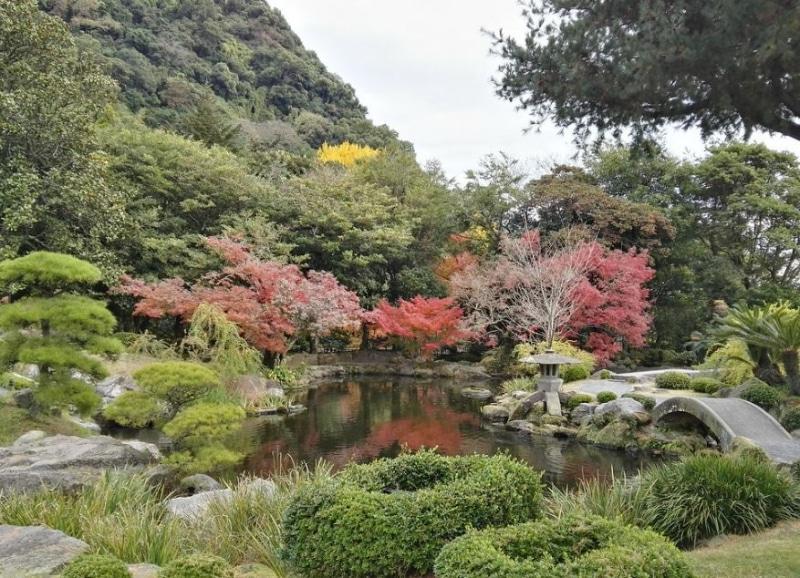
Removed from Unnamed collection
Senganen Garden 
Senganen Garden (仙巌園), also known as Isoteien (磯庭園), is a Japanese style landscaped garden along the coast north of downtown Kagoshima. One of the garden's most striking features is its use of Sakurajima and Kagoshima Bay as borrowed scenery. The garden also includes small ponds, streams, shrines and a bamboo grove.
Senganen was constructed in 1658 by the wealthy Shimazu Clan, one of the most powerful feudal clans during the Edo Period (1603-1867). The Shimazu ruled the Satsuma domain (present-day Kagoshima) for almost 700 years until the end of the feudal age in 1868. They continued to be influential into the modern era as some of the earliest adopters of Western science and technology.
At the centre of the garden stands the Iso Residence. The residence was originally built in 1658 along with the rest of the garden, but the current building mostly dates back to a mid-1880s reconstruction. After the end of the feudal age, the Iso Residence became the main residence of the Shimazu family, and its rooms are preserved in the way they were used in the 1890s. https://www.japan-guide.com/e/e4602.html
Map

Removed from Unnamed collection
Shiroyama Park 
Shiroyama Park (城山公園, Shiroyama Kōen) is a park in downtown Kagoshima that extends over Mount Shiroyama. With an elevation of 107 meters, the mountain formerly served as the site of a castle fortification, which led to its name. Shiroyama literally means "castle mountain" in Japanese. The castle's former grounds at the base of the mountain now serve as the site of the Reimeikan Museum.
The park is most famous for its Shiroyama Observatory with spectacular views over downtown Kagoshima, Kagoshima Bay and Sakurajima. The night view is also nice, particularly if a clear sky and bright moon allow Sakurajima to remain visible. Nice views can also be enjoyed from the Satsuma no Yu outdoor hot spring bath at the nearby Castle Park Hotel, which is also open to non-staying guests. https://www.japan-guide.com/e/e4607.html
Map
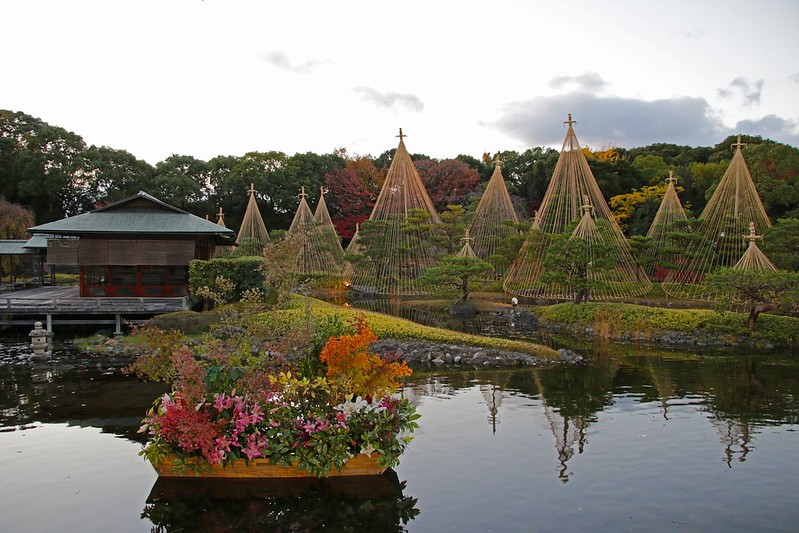
Removed from Unnamed collection
Shirotori Garden 
Enjoy a leisurely stroll in a traditional Japanese garden. In the centre of the garden is a pond that replicates the Kiso River, originating from the Kiso-Ontakesan flowing into the large sea of Ise Bay. A Japanese tea ceremony house Seiutei is available in the garden to try green tea with Japanese confectionery. http://www.nagoya-info.jp/en/see/facilities/shirotori_garden.html
Map

Removed from Unnamed collection
Korankei 
Korankei (香嵐渓, Kōrankei) is a valley near Nagoya reputed to be one of the best spots for autumn colours in the Chubu Region. Shaping the valley is the 254 meters tall Mount Iimori, on which Kojakuji Temple stands. In the 17th century, the head priest of Kojakuji planted some maple trees along with the temple approach, prompting many locals to do the same in the area. Today, visitors to Korankei can see the fruits of these past efforts, in the form of excellent autumn scenery that peaks around mid to late November each year.
The best colours tend to appear around the paths along Tomoe River at the western and southern sides of Mount Iimori. Visitors can enjoy lovely sights of maple tree tunnels and autumn colours in combination with views of the river and the few bridges across it. The vermillion Taigetsukyo Bridge is the symbol of Korankei and a great picture-taking spot. https://www.japan-guide.com/e/e3316.html
Map
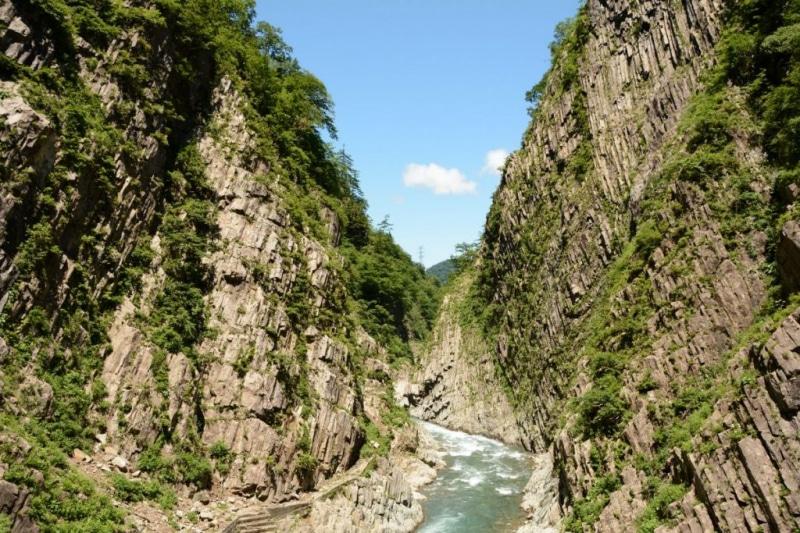
Removed from Unnamed collection
Kiyotsukyo Gorge 
One of the Three Great Gorges of Japan. Gigantic stone cliffs straddle a river, forming a large, V-shaped gorge. The grand rock surface and strong current of the river in combination are both dynamic and beautiful. The facilities were renovated in the spring of 2018. A two-story building with a cafe on the first floor and foot bath on the second floor is now in operation right next to the tunnel entrance. https://enjoyniigata.com/en/spot/6950#
Map

Removed from Unnamed collection
Naenataki Fall 
An impressive 55m waterfall framed by a steep basalt wall on each side, where thundering water crashes onto the large boulders below. The most popular season is spring when the snowmelt from the mountain flows down and causes the volume of water to increase dramatically, but we would also invite you to take a look in the fall season when the leaves have changed colours. There is a pedestrian deck overlooking waterfall, and it is about 15 minutes on foot from the nearest parking area. Come and feel the power at the basin of the waterfalls from the observation area. https://enjoyniigata.com/en/spot/8528
Map
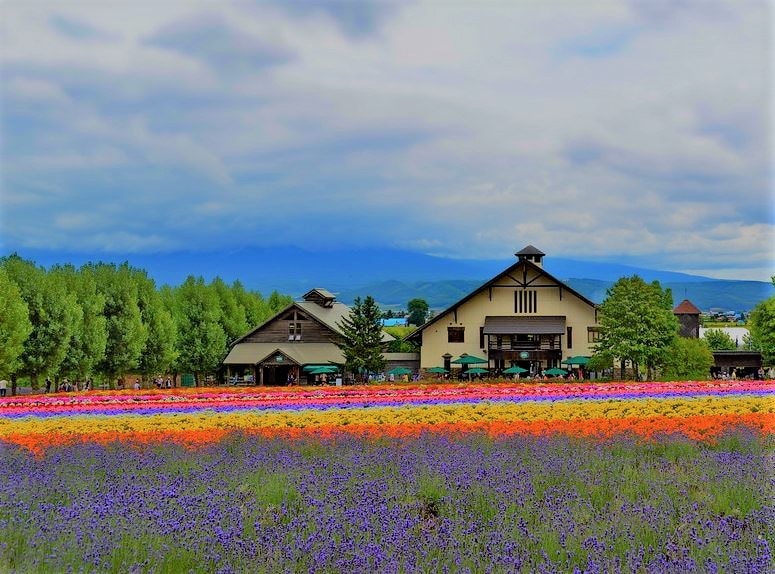
Removed from Unnamed collection
Tomita Farm 
As far as day trip ideas from Asahikawa go, Tomita Farm is a great choice. A 10ha lavender paradise, Tomita Farm provides ample opportunity for relaxed walks surrounded by seemingly endless patchwork of color, so beautifully arranged and expertly manicured, that the hills seem almost artificial.
Beautiful birch-lined pathways provide comfortable shaded access to the many lavender gift shops, workshops, and rest stops scattered throughout the gardens. The workshops allow visitors to see first-hand how the harvested lavender is treated, worked, and turned into the countless lavender infused products available as elegant gifts and items for everyday use.
Lovers of sweets will be impressed by the lavender flavored soft-serve ice cream, pudding, and jelly found at the cafe, along with plenty of other light lunch options. http://www.asahikawa-tourism.com/asahikawa/asahikawa_sites/tomita_farm/tomita_farm.html
Map

Removed from Unnamed collection
Daisetsuzan National Park 
Daisetsuzan (大雪山) is Hokkaido's largest national park. It preserves a mountainous area of virtually unspoiled wilderness, which is larger than some of Japan's smaller prefectures. It is a paradise for hikers, outdoor lovers, deer and brown bears, and the first place in Japan to see fall colors and snow each autumn. https://www.japan-guide.com/e/e6775.html
Map
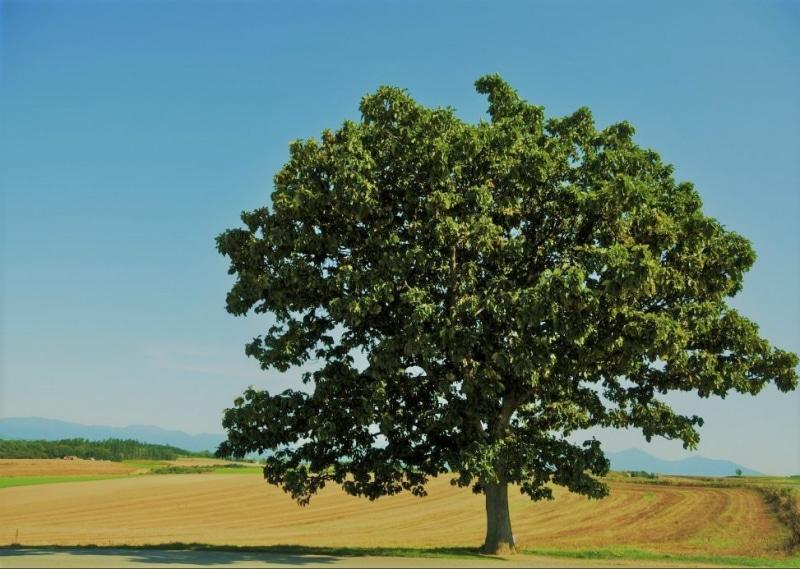
Removed from Unnamed collection
Seven Stars Tree 
Sevenstar Tree (セブンスターの木) is oak on Patchwork Hill (パッチワークの丘) in Biei town located in the southeastern part of Asahikawa city and was named after Sevenstar (famous Japanese cigarette). The tree was printed on a package of the cigarette in 1976 and has become a famous tourist attraction.
A solitary oak grows around the hilltop of the Biri at about 260 m above sea level. Its height is around 13 m. In the summer, the vital power can be felt when branches are thickly covered with leaves. But it looks only just the tree with a lot of branches closely, so it is worth seeing at a little distance. https://good-hokkaido.info/en/sevenstar-tree-biei/#Sevenstar_Tree
Map
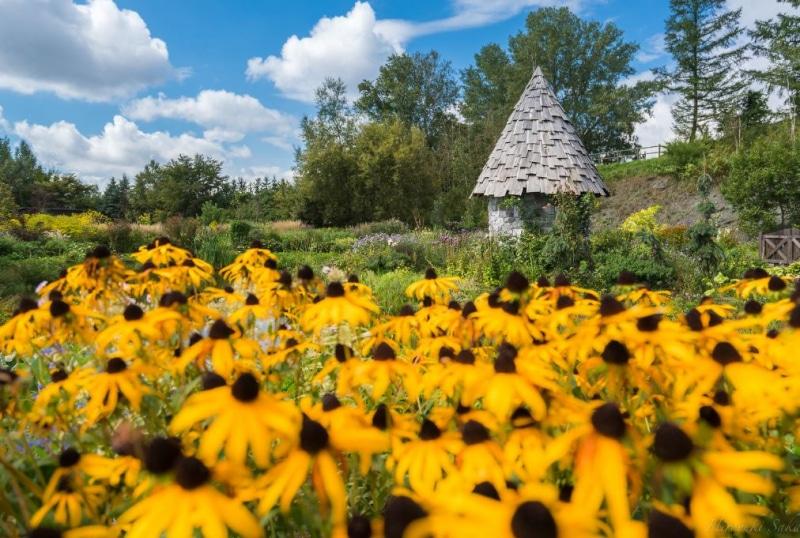
Removed from Unnamed collection
Ueno Farm 
Ueno Farm is a popular farm garden in Nagayama located in the northeastern part of Asahikawa city and has been a farmer since 1906. Ms Sayuki Ueno, a gardener, made a Hokkaido-style garden suited for the climate and natural features of Hokkaido as the foundation for an English-style garden at their site and the garden has been opened to the public since 2001. More than 2,000 types of flowering plants are planted at about 1.3 ha of the site, and visitors can enjoy various flowers from spring to autumn. An open period is from late April to mid-October. Admission fee is JPY 800. A parking lot is free of charge. NAYA cafe is built at the site and opens a business through the year. https://good-hokkaido.info/en/ueno-farm-asahikawa/#Ueno_Farm
Map

